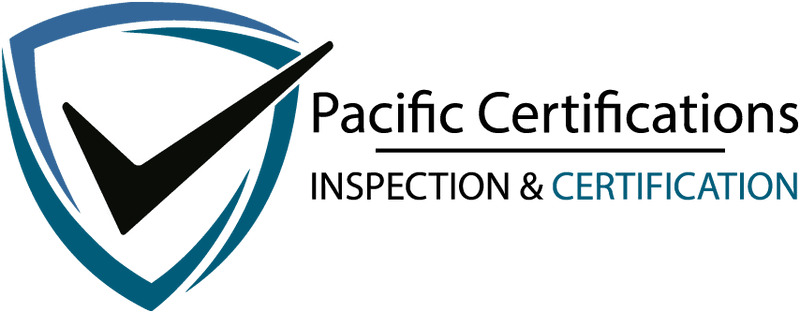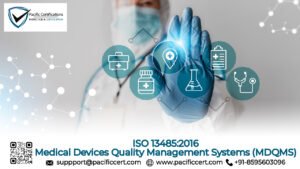
What is TS EN ISO 12100:2010 Safety of machinery — General principles for design — Risk assessment and risk reduction?
TS EN ISO 12100:2010 is a Turkish National Adoption of the International Standard ISO 12100:2010. This standard provides guidance and principles for designing machinery with a focus on risk assessment and risk reduction. Here are key aspects of TS EN ISO 12100:2010:
- Scope
- Risk Assessment
- Risk Reduction Measures
- Information for Use
- Verification of Risk Reduction Measures
- Integration with the Machinery Life Cycle
- Harmonization with other Machinery Safety Standards
TS EN ISO 12100:2010 serves as a guide for designers, manufacturers, and other stakeholders involved in machinery design to enhance safety. By following the principles outlined in the standard, organizations can systematically identify hazards, assess risks, and implement effective risk reduction measures to protect operators, maintenance personnel, and others who interact with machinery.
Therefore,The goal is to minimize the potential for accidents, injuries, and occupational hazards associated with machinery operation.
Requirements of TS EN ISO 12100:2010
Risk Assessment: Organizations should conduct a comprehensive risk assessment for machinery. This involves systematically identifying and evaluating hazards associated with machinery operation, maintenance, and foreseeable misuse. The risk assessment should consider all phases of the machinery’s life cycle and identify potential risks to operators, maintenance personnel, and others who interact with the machinery.
Risk Reduction: Based on the risk assessment, organizations should implement risk reduction measures to minimize identified risks. The standard emphasizes the use of inherent design measures to eliminate or reduce risks at the source. So, If risks cannot be eliminated entirely, organizations should apply a hierarchy of protective measures. Such as safeguarding, complementary protective measures, and information for use, to reduce risks to an acceptable level.
Information for Use: Organizations should provide clear and comprehensive information for the safe use of machinery. This includes warnings, instructions, and markings to inform operators and maintenance personnel about the potential risks associated with the machinery and how to mitigate them. The information should be easily understandable and accessible to users.
Verification: Organizations should verify the effectiveness of risk reduction measures. This involves conducting appropriate tests, calculations, simulations, or other means to validate that the implemented measures adequately reduce the identified risks. Verification ensures that the machinery meets the desired safety objectives.
Integration with the Machinery Life Cycle: The standard emphasizes the importance of considering safety throughout the entire life cycle of the machinery. Organizations should address safety aspects during the design, construction, installation, commissioning, use, maintenance, and disposal of the machinery. Collaboration with other stakeholders involved in the life cycle of the machinery is essential to ensure consistent safety measures.
Compliance with Regulations: Organizations should ensure that the machinery design and safety measures comply with applicable regulations, standards, and directives related to machinery safety. So, This includes considering specific requirements and industry standards relevant to the type of machinery and its intended use.
TS EN ISO 12100:2010 provides general principles and guidance for machinery design, risk assessment, and risk reduction. Organizations should adapt these principles to their specific machinery and industry requirements, taking into account applicable laws and regulations. The standard serves as a valuable resource to assist organizations in designing safer machinery and reducing risks associated with their operation.
Benefits of TS EN ISO 12100:2010
Enhanced Safety: The primary benefit of implementing TS EN ISO 12100:2010 is the enhancement of machinery safety. By following the principles and guidance provided in the standard, organizations can systematically identify and assess potential hazards associated with machinery. This allows for the implementation of appropriate risk reduction measures, thereby minimizing the likelihood of accidents, injuries, and occupational hazards. Thus, The standard promotes a proactive approach to safety by addressing risks at the design stage.
Compliance with Regulations: This standard assists organizations in meeting regulatory requirements related to machinery safety. By implementing the standard’s principles and recommendations, organizations can ensure compliance with applicable laws, regulations, and directives. This helps to avoid legal issues, penalties, and liability associated with non-compliance and demonstrates a commitment to ensuring the safety of machinery.
Improved Product Quality: The standard’s focus on risk assessment and risk reduction during the design phase contributes to the overall improvement of product quality. By systematically identifying and addressing potential hazards, organizations can design and manufacture machinery that meets high safety standards. So, This results in reliable, durable, and high-quality products that are less prone to malfunctions, failures, or safety-related issues.
Reduced Costs: Implementing TS EN ISO 12100 can lead to cost savings for organizations. By addressing safety considerations during the design phase, organizations can minimize the likelihood of accidents, injuries, and machinery failures. This, in turn, reduces costs associated with downtime, repairs, maintenance, and potential legal liabilities. Additionally, a proactive approach to safety helps prevent disruptions in production and safeguards against costly accidents or product recalls.
Enhanced Reputation and Customer Confidence: Adhering to TS EN ISO 12100:2010 demonstrates an organization’s commitment to ensuring the safety of its machinery and concern for the well-being of its customers and users. In fact, This can enhance the organization’s reputation and instill confidence in customers, stakeholders, and the general public. It signals a proactive approach to safety and can differentiate the organization from competitors.
Facilitated Global Trade: The standard is aligned with the international standard ISO 12100:2010. Implementing the Turkish national adoption of this standard can facilitate global trade by ensuring conformity with internationally recognized safety principles. This alignment helps organizations meet customer expectations, particularly those operating in international markets that require compliance with ISO standards.
Employee Satisfaction and Morale: Ensuring the safety of machinery through the application of this standard’s principles contributes to a safer working environment for employees. This can boost employee satisfaction, morale, and productivity. As employees feel more secure and protected while working with machinery. It fosters a culture of safety and promotes employee well-being.
TS EN ISO 12100:2010 provides numerous benefits to organizations, including enhanced safety, regulatory compliance, improved product quality, and cost savings. Also, reputation enhancement, facilitated global trade, and employee satisfaction.
By incorporating risk assessment and risk reduction principles into machinery design, organizations can create safer working environments, mitigate potential risks. Also, deliver reliable and high-quality products to their customers.
Who needs TS EN ISO 12100:2010 Safety of machinery — General principles for design — Risk assessment and risk reduction?
Machinery Manufacturers: Manufacturers of machinery, equipment, and systems can benefit from TS EN ISO 12100:2010. Implementing the standard’s principles and guidance during the design phase helps manufacturers identify and assess potential hazards, design safety features, and ensure compliance with applicable safety regulations. Thus, This enhances the safety and quality of the machinery they produce, reducing the risk of accidents and injuries.
Designers and Engineers: Designers and engineers responsible for the design and development of machinery should consider this standard as a valuable resource. The standard provides them with principles and guidelines for conducting risk assessments, identifying hazards, and implementing risk reduction measures. It helps them systematically address safety considerations during the design process, leading to safer machinery. And reducing the potential for accidents and occupational hazards.
Safety Professionals and Consultants: Safety professionals and consultants who work in the field of machinery safety can utilize the standard as a reference to guide their work. The standard provides a structured approach to risk assessment and risk reduction, offering valuable insights and best practices. Moreover, Safety professionals can apply the principles of the standard in their consulting services, helping organizations enhance the safety of their machinery and comply with safety regulations.
Organizations Purchasing Machinery: Organizations that purchase machinery for their operations should be aware of TS EN ISO 12100. Understanding the principles outlined in the standard allows them to evaluate the safety features and design of the machinery they intend to acquire. Therefore, By considering the principles of risk assessment and risk reduction, organizations can make informed decisions, selecting machinery that meets high safety standards and aligns with their specific requirements.
Regulatory Authorities and Inspectors: Regulatory authorities responsible for enforcing safety regulations, as well as inspectors conducting safety audits, can refer to this standard as a recognized standard for machinery safety. The principles and guidelines outlined in the standard can support their assessments and inspections, ensuring compliance with applicable safety regulations. Also, promoting consistent safety practices across different industries.
Health and Safety Professionals: Health and safety professionals working in various industries, particularly those where machinery plays a significant role, can benefit from the standard. The standard provides a framework for assessing and addressing the safety risks associated with machinery. Health and safety professionals can apply the principles of the standard to identify potential hazards, and develop risk reduction strategies. Also, implement appropriate safety measures to protect workers and prevent accidents.
TS EN ISO 12100:2010 depends on various factors, including the organization’s role in the design, manufacture, or use of machinery, the industry in which it operates, and the specific safety regulations applicable to its operations. While the standard is not mandatory, organizations interested in enhancing machinery safety, complying with safety regulations.
Also, reducing the risk of accidents can benefit from implementing its principles and recommendations.
If you need more support with TS EN ISO 12100:2010, please contact us at +91-8595603096 or support@pacificcert.com
Read About: GDP-Good Distribution Practices







